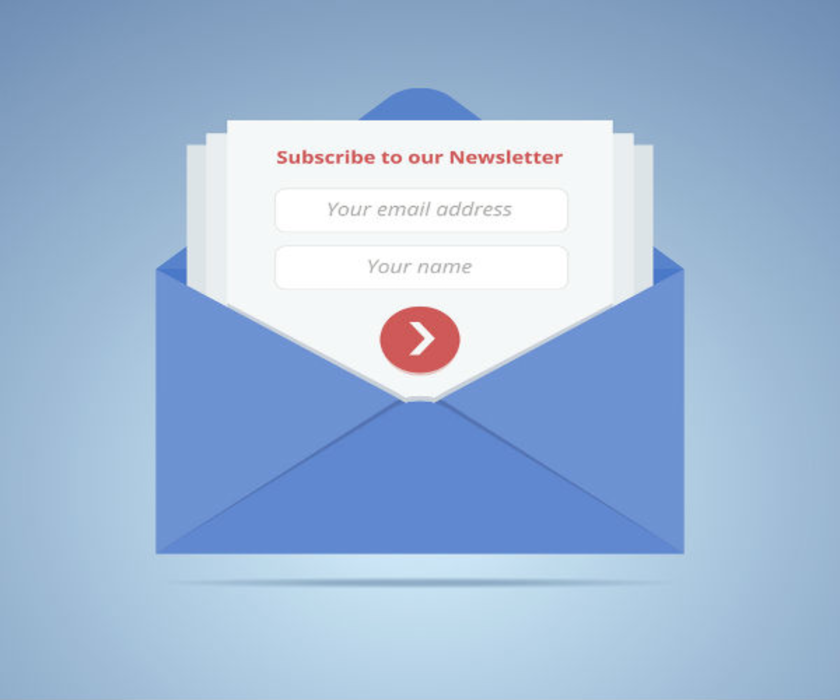Email is a difficult channel to master for any marketer. But for small business owners who are also fulfilling the roles of everything from customer service agent to chief financial officer, it can seem downright impossible. And often, knowing where to begin is the biggest hurdle.
To help small business owners new to the channel get their start, Steven Aldrich, SVP of Business Applications for GoDaddy—an Internet domain registrar that’s announcing the latest addition to its email and online marketing suite tomorrow—revealed a seven-step solution for launching a successful email marketing program.
1. Understand why you want to send email in the first place.
Small business owners are already short on time. So, it’s important for them to clearly understand why they want to email their clients and what their objectives are before adding another item to their to-do list. For instance, Aldrich explains, a food truck owner may want to send out his weekly schedule so customers know where the truck will be and when, while a financial consultant may want to send educational material to retain clients’ attention and business.
“The business type almost dictates the objective of that small business owner,” he notes.
But if small business owners still can’t pinpoint their email marketing motivations, then they should try asking their customers to learn what they’d like to hear about, Aldrich advises. “If you can’t answer that question for yourself as a small business owner,” he says, “it’s going to be very hard to have a successful email marketing campaign.”
2. Identify the benefits that you’re not already getting that you can reap by sending emails
According to Aldrich, email marketing has three main perks for small business owners:
- It’s cheap: Sending a newsletter to an accumulated client base can be a low expense, he says, noting that the minimal costs are usually far less than SEM or paid media.
- It’s personal: Email marketing allows small business owners to stay in contact with their customers from the moment they first meet to the moment that they convert into repeat buyers. And because customers who sign up for a small business’s email newsletter expect to hear from the business, there’s a higher chance that those emails will generate a sizeable open rate, he adds.
- It’s a chance to be seen as an expert: The owner can use the newsletter as an opportunity to talk to customers about the business, notify them of upcoming events, tell them about the projects that he’s working on, and educate them about the industry.
3. Carve out time to dedicate to your email marketing program
“The biggest mistake, honestly, is not taking the time, just once a month,… [to] keep the relationships going,” Aldrich says.
Small business owners are forced to wear many hats—from marketer to handyman—and balancing each role’s responsibilities can difficult. That’s why Aldrich recommends dedicating one hour a month to compiling and sending out an email newsletter. He even advises writing it on the calendar to make it seem more pressing.
“If I had to emphasize one thing, it’s to be consistent,” he says. “Send that newsletter every month and you’ll get feedback.”
4. Grow your list organically
Instead of buying a list to email to, Aldrich advises small business owners to grow their list organically. How? By asking people for their contact information on its website, at the store, at conferences, and at social gatherings and requesting permission to send them the business’s newsletter. This creates an authentic connection between the prospect and business owner that can’t be replicated with a bought list.
“Bought lists, in general for a small business owner, are not going to be very successful because you don’t have that personal relationship with the person to whose inbox you’re trying to deliver your lovingly crafted content,” he says.
5. Keep it simple
Don’t try to send email receipts, welcome series, and offers all at once. Small business owners should start small, such as with an email newsletter, to maintain a connection with customers and prospects. Once they’re comfortable with that, then they can experiment with sending additional messages.
In terms of content, Aldrich advises small business owners to write down five things that they’re passionate about and to take inspiration from their everyday roles. For instance, a salon owner can send photos of haircuts his stylists have done, he says, or a restaurant owner can talk about the new dishes that he’s working on for the fall menu. Then, don’t over-think it. Just a few simple sentences and images will do the trick.
“Take things that you’re doing every day already and share that in a friendly consumer way,” Aldrich says.
6. Write authentic subject lines
No one likes click bait. So when sending emails, small business owners should be short, genuine, and to the point in terms of what the content in the email is about.
7. Measure and learn from your success
Practice makes progress, and Aldrich suggests tracking that progress by measuring open rates and unsubscribe rates (which can help business owners determine the quality of their list and relevancy of the emails), as well as click-through rates. Although tracking click-through rates may require additional tools, he says, keeping tabs on this metric can help small business owners determine which specific pieces of content are resonating the most or driving subscribers to their websites.





